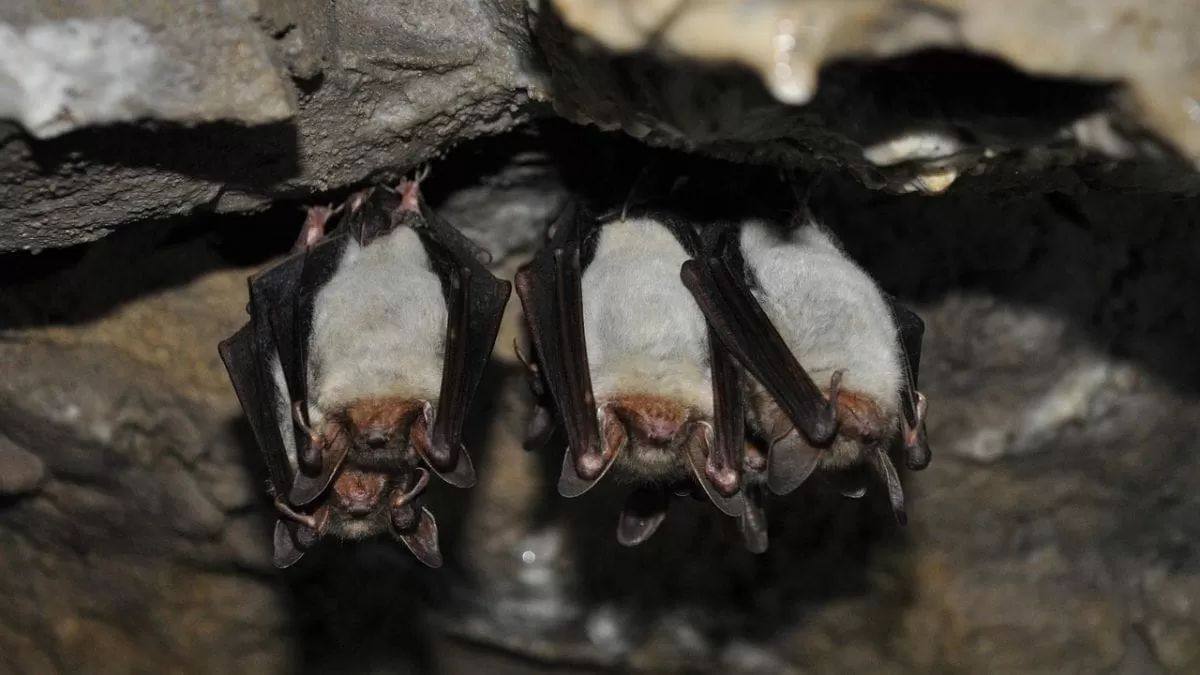A recent study conducted in Israel’s Hula Valley has shed light on the remarkable abilities of bats to avoid collisions while exiting caves in large groups. Despite the expected interference from their echolocation calls, which could potentially lead to crashes, bats have adapted by making behavioral changes that allow them to navigate safely and efficiently.
The study, led by Dr. Yossi Yovel from Tel Aviv University, focused on the behavior of the common pipistrelle bat, a small insect-eating bat found in Europe, Asia, and Africa. The Hula Valley, located in northern Israel, is home to one of the largest bat colonies in the world, with over a million bats roosting in the area’s caves.
Bats use echolocation, a process of emitting high-frequency calls and listening to the echoes that bounce back, to navigate and hunt in the dark. However, when exiting caves in large groups, the overlapping calls from multiple bats can create a confusing and potentially dangerous situation. The researchers wanted to understand how bats manage to avoid collisions in such a chaotic environment.
To study this, the team set up a network of high-speed cameras and microphones at the entrance of a cave in the Hula Valley. They recorded the bats’ behavior as they exited the cave in groups of up to 100 individuals. The results were surprising.
The researchers found that the bats fanned out in flight, creating a wider and more dispersed formation as they exited the cave. This behavior allowed them to avoid collisions and maintain a safe distance from each other. The bats also switched to higher-frequency calls that were shorter and weaker, reducing the interference between their echolocation signals.
Dr. Yovel explains, “By fanning out, the bats create a ‘safety net’ that allows them to avoid collisions. This behavior is similar to how drivers on a highway spread out to avoid accidents. The bats also switch to higher-frequency calls, which are less likely to overlap and cause confusion.”
The study also found that the bats’ behavior changed depending on the size of the group. In smaller groups, the bats flew closer together and used longer and stronger calls. But as the group size increased, the bats adjusted their behavior to avoid collisions and maintain a safe distance.
The researchers believe that this behavior is a result of natural selection. Bats that were able to avoid collisions and navigate safely were more likely to survive and pass on their genes to the next generation. Over time, this led to the development of these adaptive behaviors that allow bats to exit caves in large groups without crashing into each other.
The findings of this study have important implications for understanding the evolution of bat behavior and could also have practical applications. Bats are essential for maintaining the balance of ecosystems, and understanding their behavior can help in conservation efforts. The study could also inspire new technologies for improving the safety of autonomous vehicles, which use similar echolocation techniques to navigate.
The researchers hope to continue their study and explore other aspects of bat behavior, such as how they communicate with each other and how they navigate in different environments. They also plan to study other bat species to see if they exhibit similar adaptive behaviors.
The study conducted in Israel’s Hula Valley is a testament to the remarkable abilities of bats and their ability to adapt to challenging situations. Despite the expected interference from their echolocation calls, these small creatures have found a way to avoid collisions and navigate safely in large groups. This study not only adds to our understanding of bat behavior but also highlights the importance of studying and protecting these fascinating creatures.

